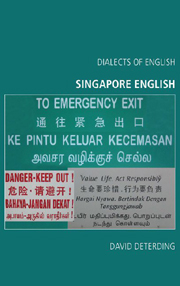1 - Introduction
Published online by Cambridge University Press: 12 September 2012
Summary
Singapore is a small island in South-East Asia, just off the southern tip of the Malay peninsular, a little over one degree north of the equator. It has a total area of about 650 square kilometres, so it is nearly twice the size of the Isle of Wight in the UK or one fifth the size of Rhode Island in the USA. The population is about 4.3 million, which makes it the second most densely populated country in the world (after Monaco).
Geographically, the main island of Singapore is shaped like a diamond, about 40 kilometres east to west, and 25 kilometres north to south. Most of the island is now built-up, though there is a central reservation area that includes forests and reservoirs in the middle. Singapore's nearest neighbour to the north is Malaysia, to which it is connected by a one-kilometre causeway and also (since 1998) a two-kilometre bridge; its nearest neighbour to the south and west is Indonesia, particularly the small islands of Batam and Bintan to the south and the large island of Sumatra to the west. Historically and culturally, the links with Malaysia have always been strong, and Singapore was briefly a member of the Federation of Malaysia from 1963 to 1965. For a map showing the location of Singapore in relation to its closest neighbours, see Figure 1.1, and for a larger-scale map of Singapore showing the location of some of the places mentioned in this book, see Figure 1.2.
- Type
- Chapter
- Information
- Singapore English , pp. 1 - 11Publisher: Edinburgh University PressPrint publication year: 2007



